Change in the Mindset of a Paediatric Exercise Physiologist: A Review of Fifty Years Research
Abstract
1. Introduction
1.1. Heart Rate during Bicycle Ergometer Exercise in Watts/Kg Bodyweight in 12- and 13-Year-Old Boys
1.2. Two Randomised Control Trials (RCT’s)
- Total body fat (%) diminishes
- Corrected upper arm diameter (mm) increases
- Handgrip (kg) increases
- Bent arm hang (sec) increases
- 50 m shuttle run (sec) diminishes
- Plate tapping (sec) decreases
- Physical working capacity (PWC170 in watt/kg body weight) increases
- Forced expiratory volume (FEV%) increases
1.3. Multiple Longitudinal Study
1.4. Advanced Statistical Methods
1.5. Changes in Bones by Mechanical Load
1.6. Other Recent Longitudinal Studies
2. Conclusions
- Physical activity is good; more movement is better;
- At least 150 min per week of moderate physical activity (walking, bicycling);
- At least twice a week muscle- and bone-strengthening exercises;
- Prevent long-time sitting.
Funding
Acknowledgments
Conflicts of Interest
References
- Falk, B.; Klentrou, P.; Armstrong, N.; Rowland, T.; Kemper, H.C. A Brief History of Pediatric Exercise Physiology. Pediatr. Exerc. Sci. 2018, 30, 1–10. [Google Scholar] [CrossRef] [PubMed]
- Kemper, H.C.G. Heart rate during bicycle ergometer exercise in watts per kilogram body weight of 12 ad 13-year-old boys. Z. Kinderheilk. 1972, 113, 161–169. [Google Scholar] [CrossRef] [PubMed]
- Kemper, H.C.G.; Poulus, A.J.; van der Helm, N. Circuit-Training und Koerpererziehung bei 12- und 13 jaehrigen Jungen (Influence of Circuit-training in 12–13-year-old boys). Med. Sport 1971, 6, 179–184. [Google Scholar]
- Wahlund, H. Determination of the physical working capacity. Acta Med. Scand. 1948, 132 (Suppl. S215), 78–86. [Google Scholar]
- Vrijens, J. The influence of interval circuit exercises on physical fitness in adolescents. Res. Quart. 1969, 40, 595–599. [Google Scholar] [CrossRef]
- Kemper, H.C.; Verschuur, R.; Ras, K.G.; Snel, J.; Splinter, P.G.; Tavecchio, L.W. Effect of 5- versus 3-lessons-a-week physical education program upon the physical development of 12 and 13 year old schoolboys. J. Sports Med. Phys. Fit. 1976, 16, 319–326. [Google Scholar]
- Singerland, M.; Oomen, J.; Borghouts, L. Physical activity levels during Dutch primary and secondary school physical education. Eur. J. Sport Sci. 2011, 11, 249–257. [Google Scholar] [CrossRef]
- Kemper, H.C.G.; Van’t Hof, M.A. Design of a multiple longitudinal study of growth and health in teenagers. Eur. J. Pediatr. 1978, 129, 147–155. [Google Scholar] [CrossRef] [PubMed]
- Bar-Or, O.; Zwiren, L.D. Maximal oxygen consumption test during arm exercise- reliability and validity. J. Appl. Physiol. 1975, 38, 424–426. [Google Scholar] [CrossRef] [PubMed]
- Kemper, H.C.G.; Koppes, L.L.J. Is physical activity important for aerobic power in young males and females? In Amsterdam Growth and Health Longitudinal Study; Kemper, H.C.G., Ed.; Karger: Basel, Switzerland, 2004; Volume 47, pp. 152–166. [Google Scholar]
- Astrand, P.O. Experimental Studies of Physical Work Capacity in Relation to Sex and Age; E. Munksgaard: Copenhagen, Denmark, 1952. [Google Scholar]
- Twisk, J.W.R.; Kemper, H.C.G. Longitudinal data analysis. In Amsterdam Growth and Health Longitudinal Study; Kemper, H.C.G., Ed.; Karger: Basel, Switzerland, 2004; Volume 47, pp. 30–43. [Google Scholar]
- Van Mechelen, W.; Twisk, J.W.R.; Post, G.B.; Kemper, H.C.G. Physical activity of young people: The Amsterdam Growth and Health Longitudinal Study. Med. Sci. Sports Exerc. 2000, 32, 1610–1616. [Google Scholar] [CrossRef] [PubMed]
- Kemper, H.C.; Twisk, J.W.R.; Van Mechelen, W. Changes in aerobic fitness in boys and girls over a period of 25 years: Data from the Amsterdam Growth and Health Longitudinal Study revisited and extended. Pediatr. Exerc. Sci. 2013, 25, 524–535. [Google Scholar] [CrossRef] [PubMed]
- Armstrong, N.; Tomkinson, G.; Ekelund, U. Aerobic fitness and its relationship to sport, exercise training and habitual physical activity during youth. Br. J. Sports Med. 2011, 45, 849–858. [Google Scholar] [CrossRef] [PubMed]
- Morrow, J.R., Jr.; Freedson, P.S. Relationship between habitual physical activity and aerobic fitness in adolescents. Pediatr. Exerc. Sci. 1994, 6, 315–329. [Google Scholar] [CrossRef]
- Montoye, H.J.; Kemper, H.C.G.; Saris, W.H.M.; Washburn, H.R. Measuring Physical Activity and Energy Expenditure; Human Kinetics: Champaign, IL, USA, 1996. [Google Scholar]
- Kemper, H.C.G. How important is physical activity for the development of aerobic power in youth? Sci. Mot. 1992, 17, 257–270. [Google Scholar]
- Groothausen, J.; Siemer, H.; Kemper, H.C.G.; Twisk, J.; Welten, D.C. Influence of peak strain on lumbar bone mineral density: An analysis of 15-year physical activity in young males and females. Pediatric Exerc. Sci. 1997, 9, 159–173. [Google Scholar] [CrossRef]
- Kemper, H.C.G.; Twisk, J.W.R.; Van Mechelen, W.; Post, G.B.; Roos, J.C.; Lips, P.T.A.M. A fifteen-year longitudinal study in young adults on the relation of physical fitness with the development of bone mass: The Amsterdam Growth and Health Longitudinal Study. Bone 2000, 27, 847–853. [Google Scholar] [CrossRef]
- Serré, C. Sporthumor, Cartoonsins de Claude Serre; Editions Jacques Glenat: Paris, France, 1978. [Google Scholar]
- Monyeki, M.A.; Awotidebe, A.; Moss, S.J.; Sparks, M.; Wushe, S.; Coetzee, B.; Pienaar, C.; Brewer, E.; De Ridder, H.J.; Swanepoel, M.; et al. Relationship between physical activity, body fatness and cardiorespiratory fitness in South African adolescents: The PAHL Study. Afr. J. Phys. Act. Health Sci. 2017, 23, 111–128. [Google Scholar]
- Matshipi, M.; Monyeki, K.D.; Mafumo, N.; Monyeki, S.M.; Siweya, H.L.; Kemper, H.C.G. The use of alcohol and knowledge of cardiovascular diseases among Ellisras rural children aged 14–22 years: Ellisras Longitudinal Study. Int. J. Environ. Res. Public Health 2019, 16, 2650. [Google Scholar] [CrossRef] [PubMed]
- Exuperio, I.N.; Agostinete, R.R.; Werneck, A.O.; Vanegas, S.M.; Luiz-de-Marco, R.; Mesquitq, E.D.L.; Kemper, H.C.G.; Fernandes, R.A. Impact of artistic gymnastics on bone formation marker, density and geometry in female adolescents: ABCD—Growth Study. J. Bone Metab. 2019, 26, 75–82. [Google Scholar] [CrossRef] [PubMed]
- Gezondheidsraad. Beweegrichtlijnen (Health Council of The Netherlands, Guidelines for Daily Physical Activity); Gezondheidsraad: Den Haag, The Netherlands, 2017. [Google Scholar]
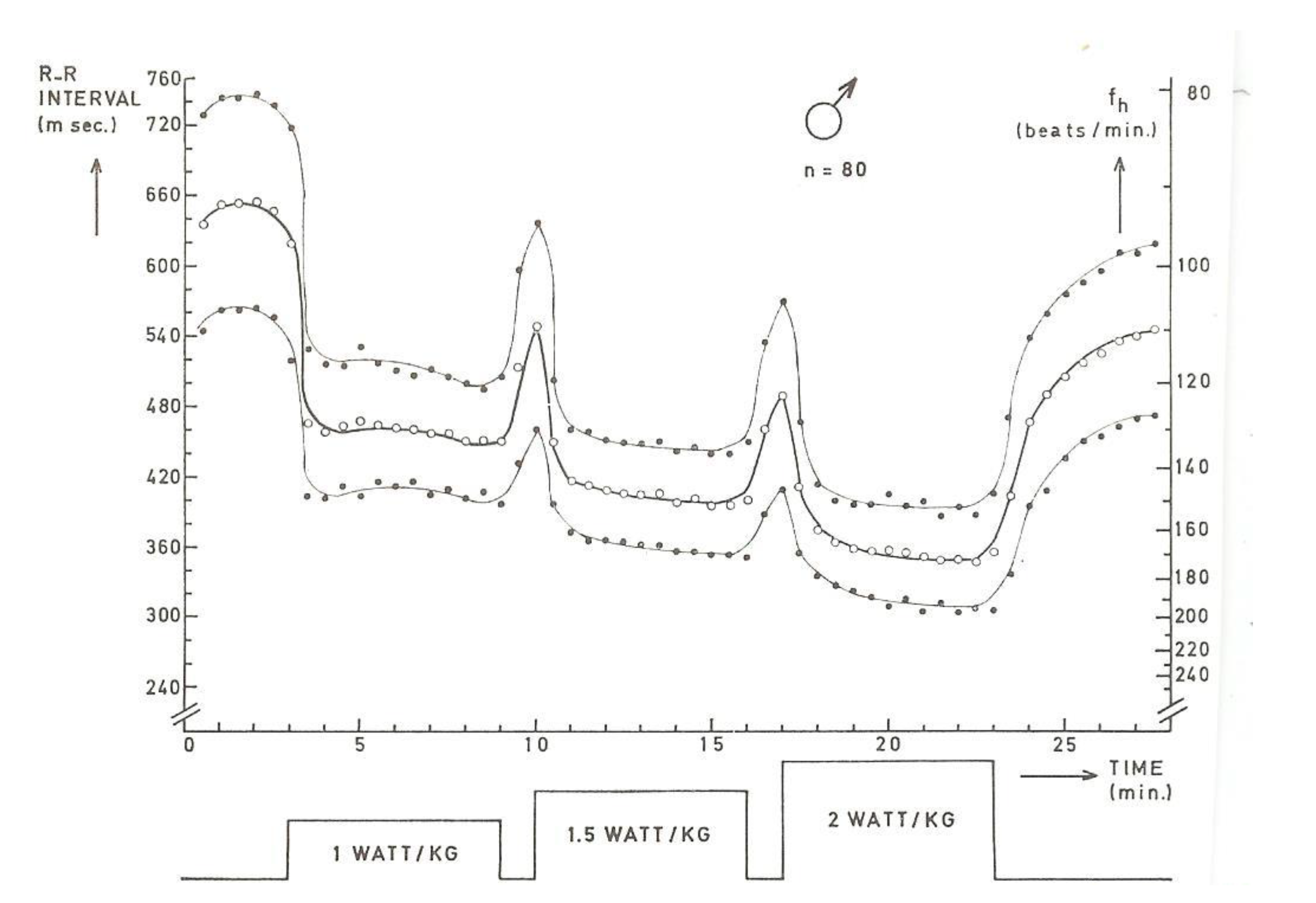

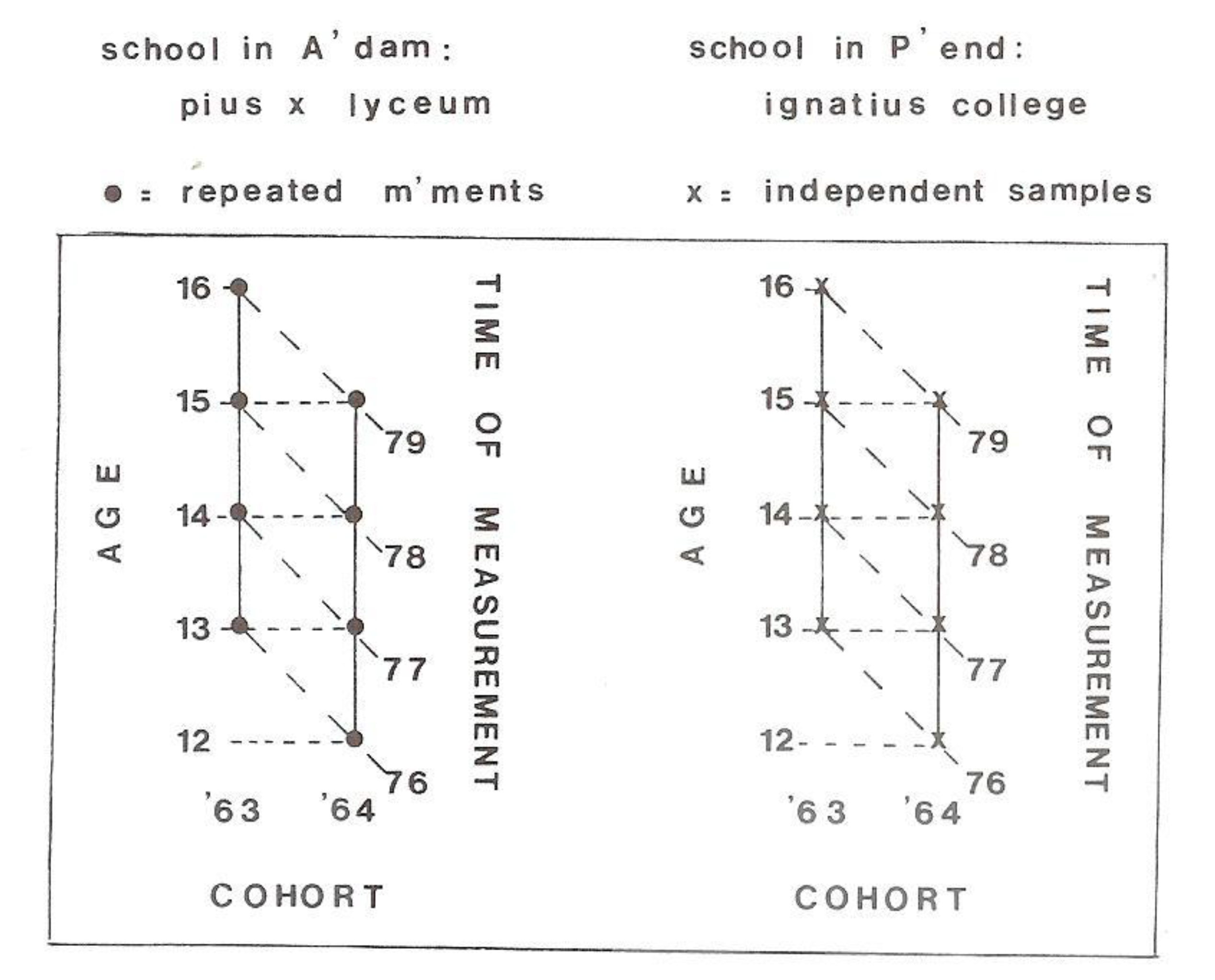

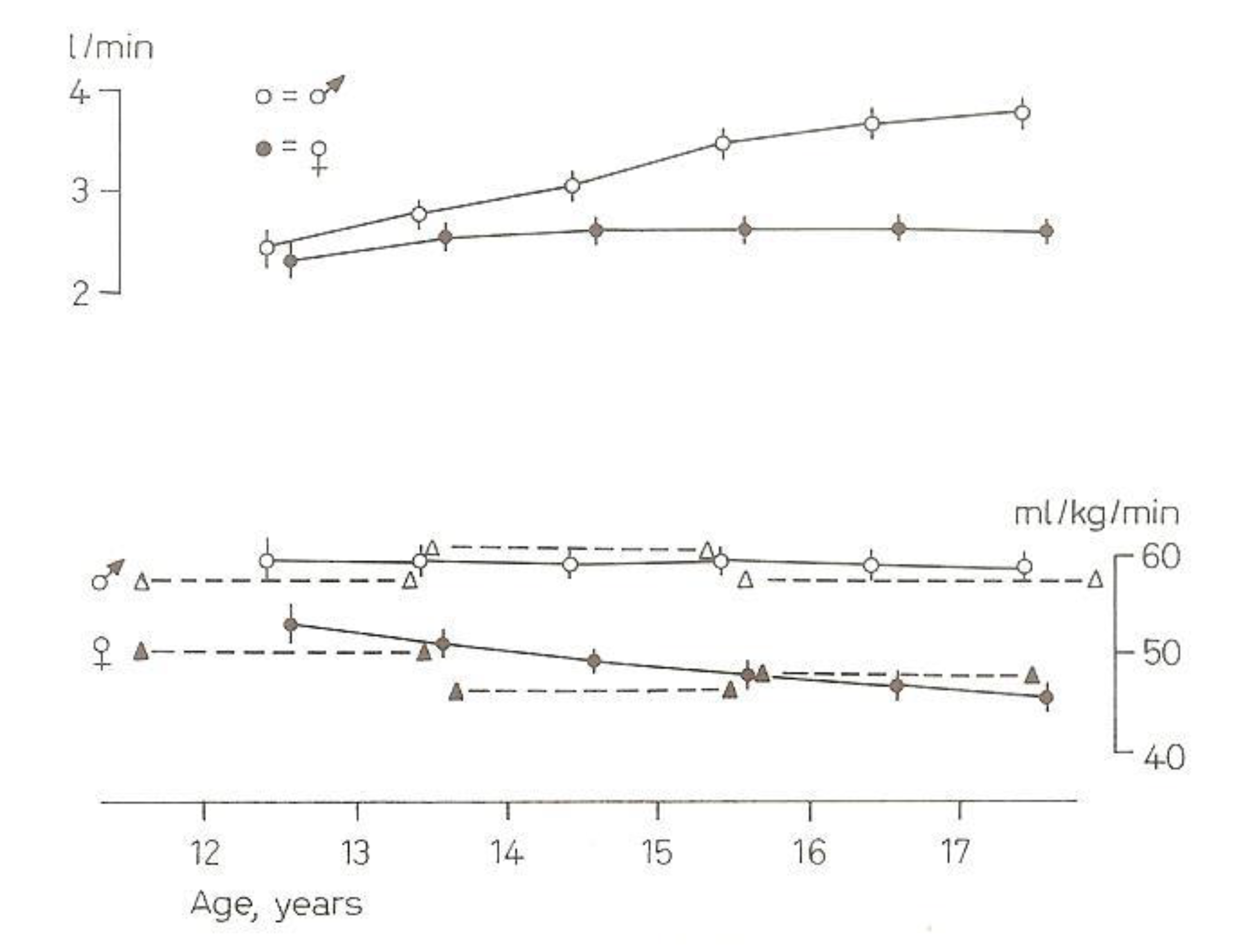
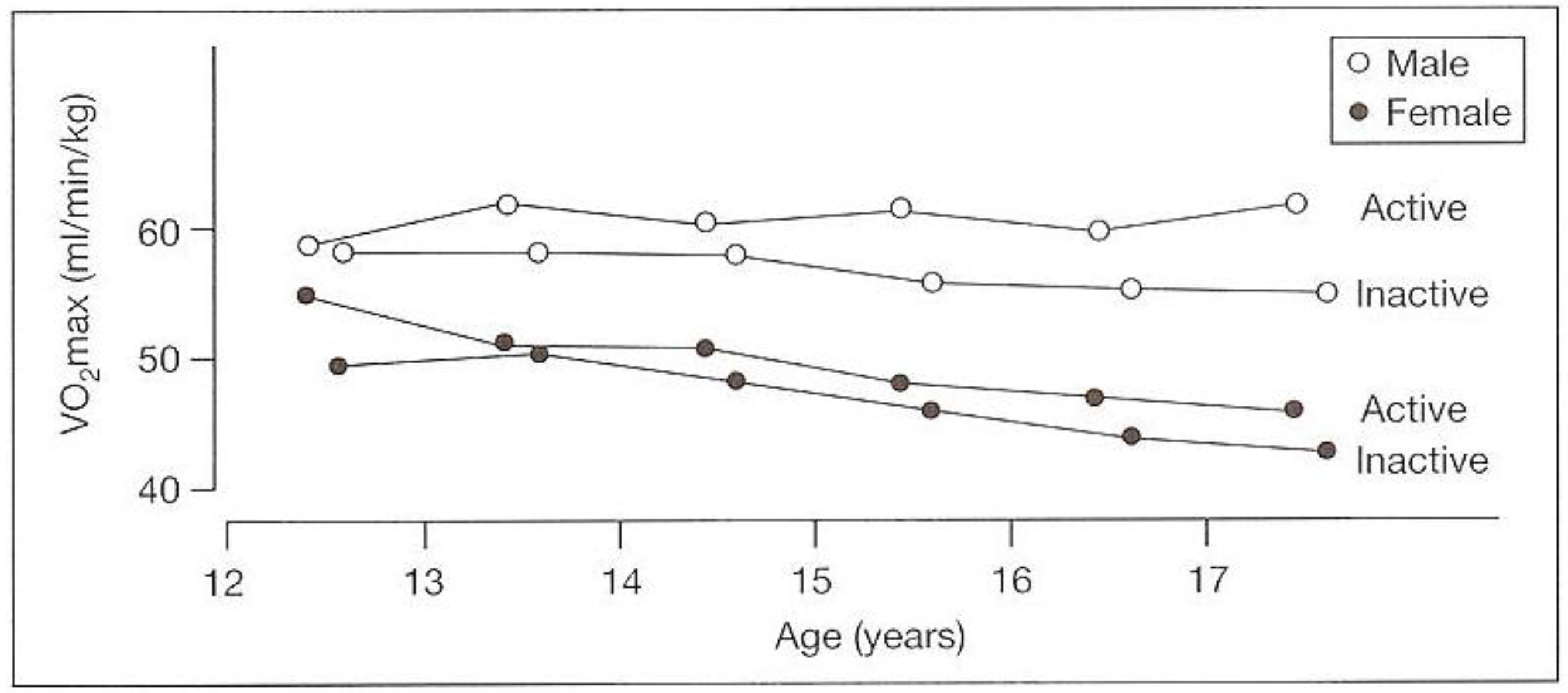
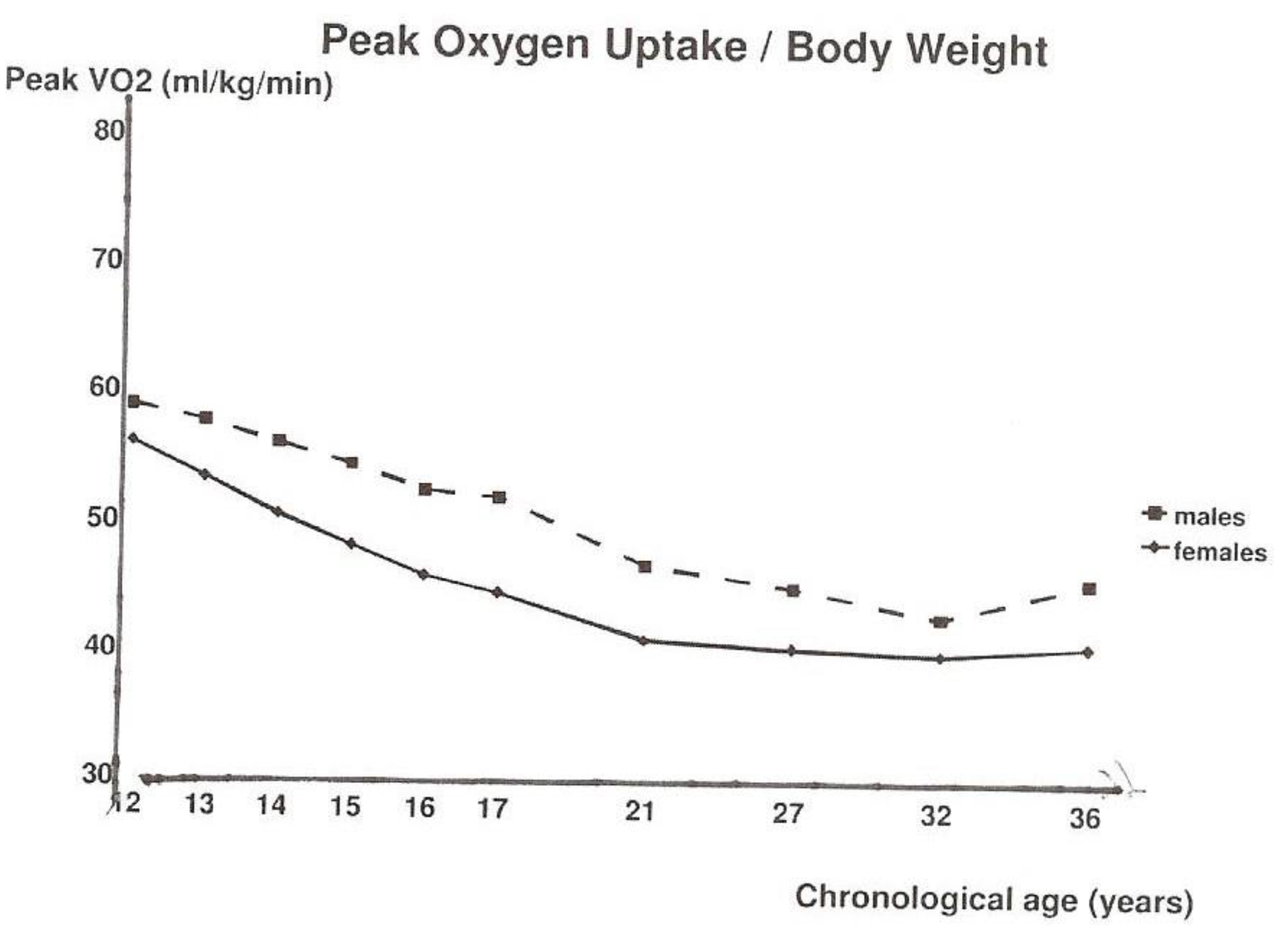
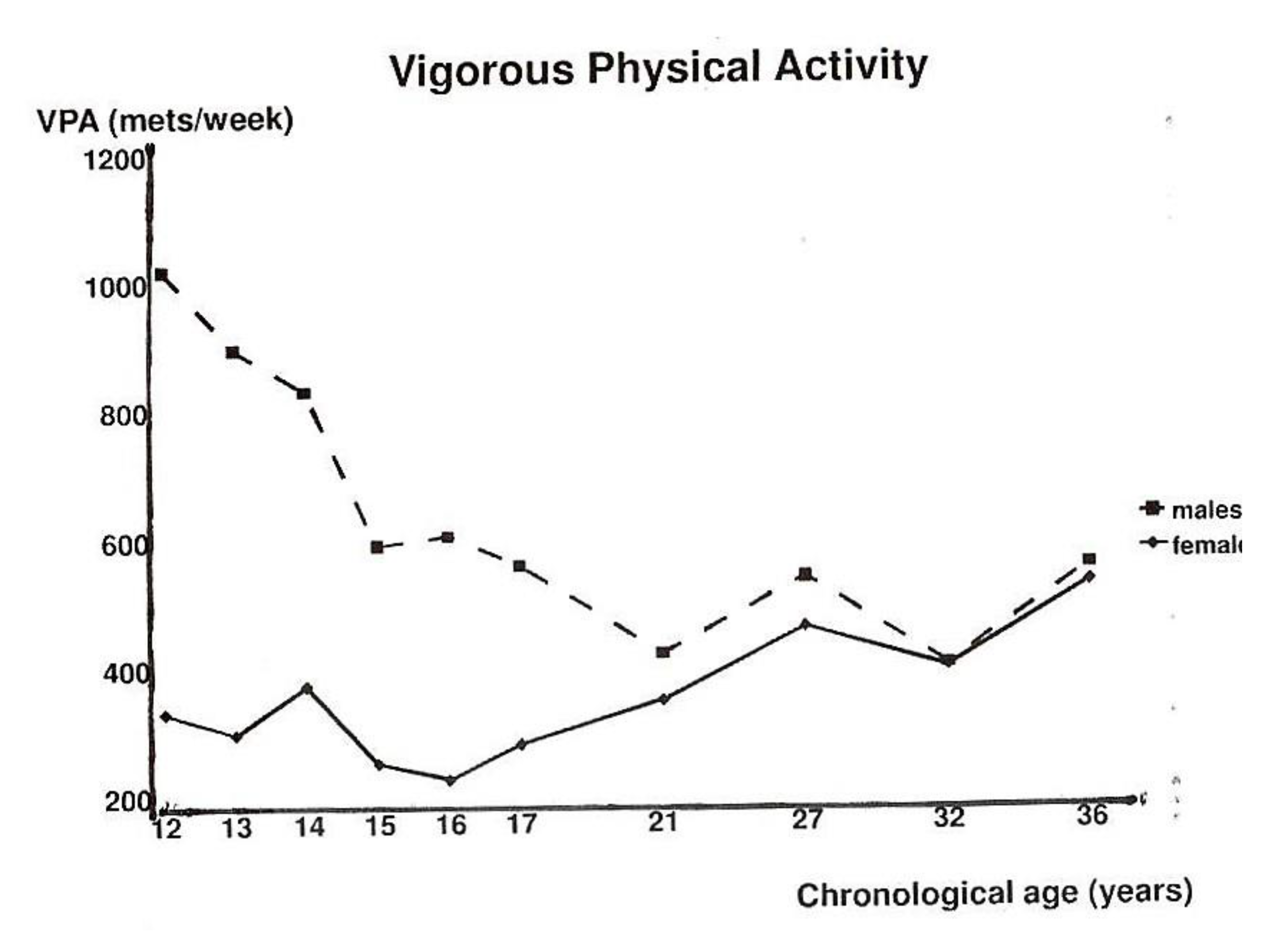

| n | Weight (Kg) | W170 (W/kg) | ||
|---|---|---|---|---|
| California | (Adams, 1961) | 60 | 48 | 2.4 |
| Stockholm | (Adams, 1961) | 36 | 42 | 2.4 |
| Turku, Finl. | (Olavi, 1965) | 27 | 36 | 2.7 |
| Canada | (C.A.H.P.E.R., 1968) | 410 | 42 | 2.2 |
| Praag | (Mᾴcek, 1970) | 90 | 46 | 2.6 |
| Japan | (Ishiko, 1971) | 22 | 40 | 2.3 |
| Giessen, W. Germ | (Mocellin, 1971) | 21 | 42 | 2.3 |
| Amsterdam | (Kemper, 1971) | 80 | 42 | 2.0 |
| Test 1 | Test 2 | Test 3 | |
|---|---|---|---|
| FEV% | n.s. | ||
| Corr. upp. arm diam. | * | n.s. | |
| FAT% | n.s. | ||
| Plate tapping | n.s. | ||
| 50 m shuttle run | n.s. | ||
| Bent arm hang | n.s. | ||
| Handgrip | ** | * | n.s. |
| W170 | n.s. |
© 2020 by the author. Licensee MDPI, Basel, Switzerland. This article is an open access article distributed under the terms and conditions of the Creative Commons Attribution (CC BY) license (http://creativecommons.org/licenses/by/4.0/).
Share and Cite
Kemper, H.C.G. Change in the Mindset of a Paediatric Exercise Physiologist: A Review of Fifty Years Research. Int. J. Environ. Res. Public Health 2020, 17, 2888. https://doi.org/10.3390/ijerph17082888
Kemper HCG. Change in the Mindset of a Paediatric Exercise Physiologist: A Review of Fifty Years Research. International Journal of Environmental Research and Public Health. 2020; 17(8):2888. https://doi.org/10.3390/ijerph17082888
Chicago/Turabian StyleKemper, Han C. G. 2020. "Change in the Mindset of a Paediatric Exercise Physiologist: A Review of Fifty Years Research" International Journal of Environmental Research and Public Health 17, no. 8: 2888. https://doi.org/10.3390/ijerph17082888
APA StyleKemper, H. C. G. (2020). Change in the Mindset of a Paediatric Exercise Physiologist: A Review of Fifty Years Research. International Journal of Environmental Research and Public Health, 17(8), 2888. https://doi.org/10.3390/ijerph17082888





